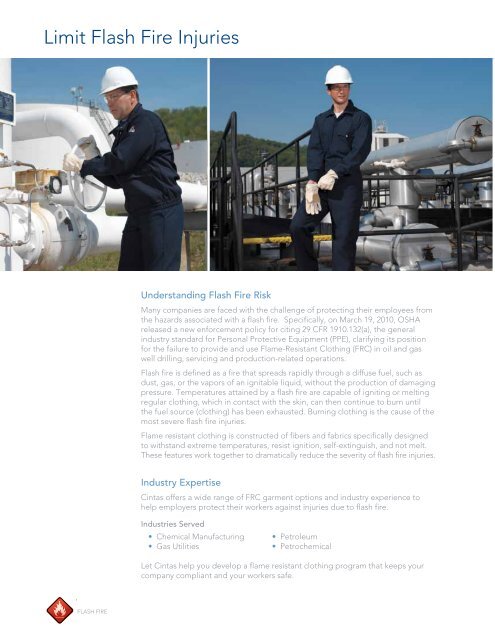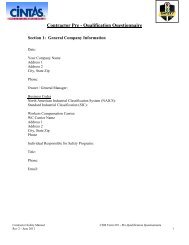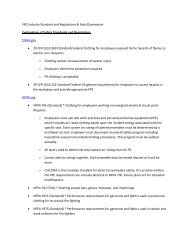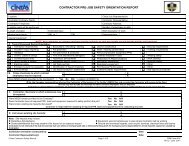View Brochure - Cintas
View Brochure - Cintas
View Brochure - Cintas
- No tags were found...
Create successful ePaper yourself
Turn your PDF publications into a flip-book with our unique Google optimized e-Paper software.
Limit Flash Fire InjuriesUnderstanding Flash Fire RiskMany companies are faced with the challenge of protecting their employees fromthe hazards associated with a flash fire. Specifically, on March 19, 2010, OSHAreleased a new enforcement policy for citing 29 CFR 1910.132(a), the generalindustry standard for Personal Protective Equipment (PPE), clarifying its positionfor the failure to provide and use Flame-Resistant Clothing (FRC) in oil and gaswell drilling, servicing and production-related operations.Flash fire is defined as a fire that spreads rapidly through a diffuse fuel, such asdust, gas, or the vapors of an ignitable liquid, without the production of damagingpressure. Temperatures attained by a flash fire are capable of igniting or meltingregular clothing, which in contact with the skin, can then continue to burn untilthe fuel source (clothing) has been exhausted. Burning clothing is the cause of themost severe flash fire injuries.Flame resistant clothing is constructed of fibers and fabrics specifically designedto withstand extreme temperatures, resist ignition, self-extinguish, and not melt.These features work together to dramatically reduce the severity of flash fire injuries.Industry Expertise<strong>Cintas</strong> offers a wide range of FRC garment options and industry experience tohelp employers protect their workers against injuries due to flash fire.Industries Served• Chemical Manufacturing• Gas Utilities• Petroleum• PetrochemicalLet <strong>Cintas</strong> help you develop a flame resistant clothing program that keeps yourcompany compliant and your workers safe.Flash Fire
















